"Over a period of 10 years, we will sell more electric vehicles in this country than anyone else, including Tesla." In May, General Motors (GM) CEO Mary Barra challenged Tesla in an interview. For a long time, the Iron Lady didn't want to mention Tesla and musk too much.
This is a difficult transcendence, and several groups of figures are particularly heartbreaking.
In April, 2022, after a 19% month on month decline, Tesla's market value still reached $902.12 billion, more than 16 times that of general motors, whose market value was $55.27 billion.
In the last quarter of 2021, GM delivered only 26 electric vehicles in the United States, equivalent to Tesla's one hour sales in the third quarter of last year. According to the statistics of the third party at that time, Tesla Model 3 sold an average of 24.5 vehicles per hour. Elon Musk, CEO of Tesla, naturally did not want to give up this good opportunity and commented on GM in a strange way on twitter, "there is still room for improvement."
The shocking sales comparison between GM, 113, and Tesla, 19, a rising star and a declining giant, makes people sigh.
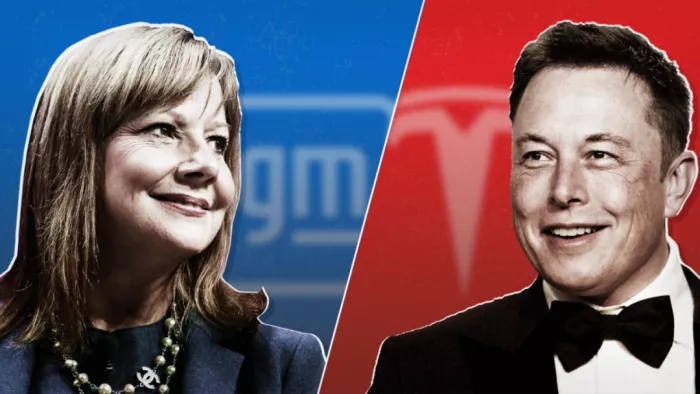
By moving the time pointer forward and backward to uncover a dusty past, GM's feelings for Tesla are more likely to be complicated. In a sense, it is because GM dug its own grave that Tesla emerged.
In 1996, General Motors briefly introduced the electric vehicle EV1. This is the first mass-produced electric vehicle available to the public in the world, and also the only model requiring recall and mandatory scrapping in history.
With the unprofitable electric vehicles, the fuel vehicles that make a lot of money every day, the concerns about parts and supply infrastructure, and the pressure from the Bush administration and the US oil company, GM strangled EV1 in its cradle, forcibly recycled all vehicles and crushed them to pieces.
Tesla's glory today once had the opportunity to belong to GM. Musk sealed the conclusion for GM's "credit" in 2017: "Tesla was launched in response to GM's cancellation of the EV1 program."
On july24,2003, before the last moment of EV1, electric car lovers held a special funeral for EV1 in Hollywood cemetery.
Accompanied by the sad and melodious Scottish bagpipes, a fleet of EV1 slowly drove in, and celebrities, car owners and environmentalists offered eulogy for their car. This helpless move now looks more like a small roast conference, and everyone's speech is full of irony like this funeral.
Eric garcetti, chairman of the Los Angeles City Council, said, "I was the driver of EV1 from 1998 to December this year. On that day, GM pried the EV1 charger away from my clenched hands..."
Owner ed Begley said, "those opponents are right. Electric vehicles are not suitable for everyone. Their endurance is very limited and can only meet the needs of 90% of drivers
The keynote of the funeral was not sad. Laughter and applause broke out from time to time in the crowd until Chelsea sexton, the EV1 expert, came to the stage. "My son often goes out in EV1. He said, I hope we can keep EV1 for a long time, and all I can say is, I want to." Sexton shook his head unconsciously, with tears in his eyes.
In the wind of the past, the people who participated in the funeral did not expect that they buried not only EV1, but also GM's future; What is buried is not only their memory, but also the seeds that Tesla has been hanging all the way since.
1 short lived EV1, universal apotheosis
From 1996 to 2002, General Motors produced a total of 1117 EV1.
In the late 1990s, under the policy stick, a mighty electric vehicle movement rose in California. On september28,1990, the California Air Resources Board (CARB) required the seven best-selling automobile manufacturers to achieve "zero emissions" of 2% of their sales in California by 1998, 5% in 2001 and 10% in 2003.
In other words, any automaker must provide at least one zero emission vehicle to continue operating in the state.
It's not clear when they started to prepare, but every car company quickly produced electric vehicle products: Chrysler tevan, Ford Ranger EV pickup truck, GM EV1, Honda EV plus, Nissan Altra EV and Toyota RAV4 EV have sprung up.
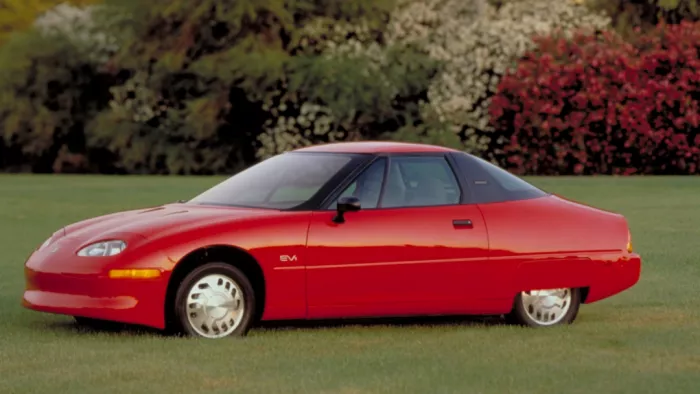
EV1 is one of the best. In order to continue to sell cars in California, GM rented EV1 to customers in California. The initial price of this model was $34000, which was about $60000 after adjusting for inflation. At that time, it was a big expense. GM also offers rental services ranging from $399 to $549 per month.
Despite the high cost, short mileage and poor network of charging stations, people soon fell in love with this futuristic two door two seat electric car.
In the past six years, GM has launched two generations of EV1 models. The first generation has produced 660 vehicles. It uses the most advanced lead-acid battery at that time. The 0-60 km acceleration is about 8.4 seconds, and the range is between 70 and 100 miles; The second generation model introduced in 1999 has made some progress, with a range of 160 miles, but a longer charging time.
According to today's electric vehicle endurance standard of 1000 kilometers, the EV1 configuration seems to be somewhat insignificant. However, its appearance is still revolutionary. In 2013, BMW I3 released by BMW can only achieve 150 mile endurance.
From the original intention, EV1 is to cope with the policy, but behind it, GM has prepared for the emergence of new power models for several years and invested huge R & D costs.
The best proof is that the technology and functions related to this car have won 23 different patents. EV1 has reconsidered or transformed almost every part of the vehicle, turning breakthrough technologies such as keyless entry, electro-hydraulic power steering and electro-hydraulic regenerative braking into reality.
EV1 is also one of the first vehicles to use aluminum space frame, which is about 40% lighter than steel. Engineers use aviation grade structural adhesive to connect the frame, eliminating many welds; They also use composite materials to make body panels to reduce weight, and there are numerous examples.
If we follow this path, GM may lead the electric car revolution, but there is no if. EV1 won a technical victory, but failed completely in the market.
Since the end of 1999, GM has quietly closed the EV1 production line and laid off a large number of electric vehicle R & D personnel. Three years later, in 2002, GM took back all EV1 that had expired and sent them to the construction site on the edge of the city for destruction, no matter how much the owner resisted.

"We don't simply crush it. Every part will be recycled to prevent it from falling into the hands of others." GM spokesman Dave barthmuss said that this was one of the four fates of EV1. About 40 of the remaining three were sent to universities, museums and for engineers' research.
The electric cars of Ford, Honda and Toyota can not escape the fate of fragmentation, and are mercilessly crushed into hundreds of pieces by machines.
"This has never happened. Car manufacturers recycle cars one by one and crush them, as if afraid of missing any of them." Chelsea Sexton said, "what they want to do is to make people forget about electric cars."
2 only retrogression can lead to the future**
Success is universal, failure is universal.
In april2020, the shell of an EV1 was successfully sold for $21511 through online auction. For a pile of junk, this is an absurd astronomical figure.
In the history of the development of the automobile industry, the extinct EV1 was almost deified. Even today, a large number of engineers still regard EV1 as a monument to the art of automotive engineering. They firmly believe that if EV1 used today's lithium-ion battery at that time, no electric vehicle could catch up with it.

In the documentary who killed the electric car, the producers listed "suspects" including car manufacturers, oil lobbyists, governments and consumers. Some of them believe that the "evil" General Motors killed EV1.
Tomeverhart, a director who has worked on the GM board for 13 years, said, "I don't think GM is trying its best to accelerate the launch of electric vehicles. They think the cost is too high. They can only produce four cars a day. There are too many manual processes and special structures in the production process."
The production cost is as high as 250000 US dollars, and EV1's original sin is to lose one by selling one, which is unprofitable.
Dr. evorett regretfully said, "the reason why we do EV1 is that it can make GM take a big step ahead in the field of electric vehicles and give us a leading position for two to three years. The reality is also true. What frustrates me is that the management did not take advantage of the leading edge. As for the reason, the result of the board discussion is that there is no interest in selling electric vehicles."
More seriously, the arrival of electric vehicles threatens the status of internal combustion engines, which is a large part of GM's revenue. Bob sexton, the maintenance technician of EV1, said that EV1 has no process of parts maintenance and replacement. For example, the oil filter of the fuel engine needs to be replaced four times a year, and the electric vehicle loses this part of its income. "It is very easy to repair EV1. The owner drives the car every 5000 kilometers. We can continue to drive back to the highway by turning the tires and adding some wiper water."
Throughout the ages, it is not easy to change your life.
In order to drive EV1 away smoothly, the automobile manufacturing alliance, including GM, filed a lawsuit with carb to demand the repeal of the electric vehicle act. Almost at the same time, then U.S. President George W. Bush began to vigorously promote the development of hydrogen energy and announced that he would invest $1.2 billion to launch the free fuel and free car program.
Hundreds of millions of hot money has been poured into hydrogen fuel cells, giving this field an exciting future. A decisive hearing was going on, and everyone looked grave. This was an unfair duel. There were 80 people shouting for electric vehicles, and only two automobile manufacturers stood on the side of canceling the decree.
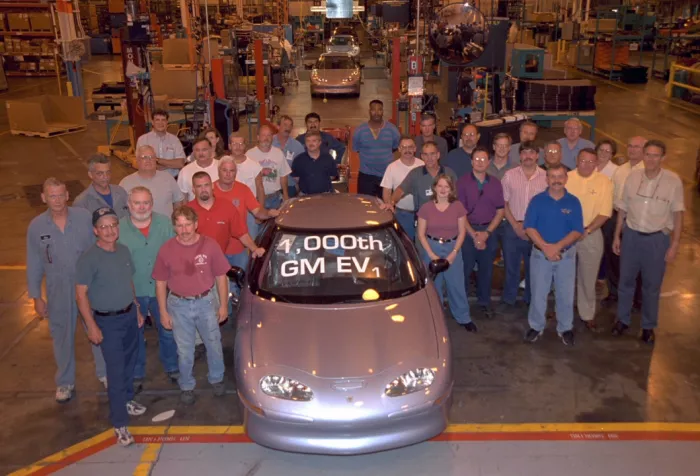
In the end, the victory belongs to the minority.
"I'm not speaking for engineers and scientists. They pay more attention to advanced automotive technology," said Ralph Nader, a consumer rights advocate. "But for GM's top managers, their motto is that only retrogression can lead to the future."
"They try every means to let politicians follow them. Once the car manufacturers get a longer deadline, they go back to do their own things. However, when the deadline is coming, the final result must be very bad." Nader's words were stamped.
More than a decade later, GM delivered 26 electric vehicles, which confirmed his view.
3 EV1 and Tesla**
The end means a new beginning.
The same year EV1 "died", two automotive engineers, Martin Eberhard and Marc tarpenning, founded Tesla with the $187million obtained from selling the e-book business. In 2004, musk took us $7.5 million to become a shareholder in Tesla's round a financing.
It is said that the reason why Eberhard had the idea of creating Tesla in those years was that he test drove an electric car made by AC propulsion and was amazed at its disruptive driving experience.
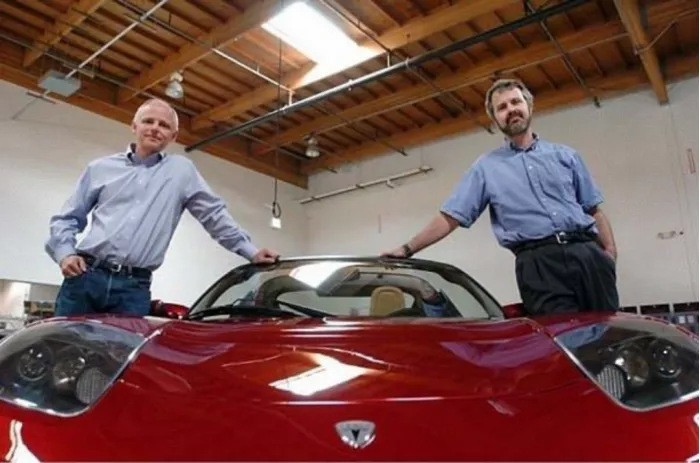
Alan Cocconi, the founder of AC propulsion and a great figure in the electric vehicle industry, designed and manufactured the motor and electronic control system of GM impact, which was the later EV1 prototype. Because of the conflict with GM's idea, in 1992, kekoni founded his own enterprise and continued to transform electric vehicle technology.
In 1997, kekoni and his partner Peter gage designed their own electric car tzero, which, like EV1, used a ton of lead-acid batteries. Five years later, GM stopped research and development, but AC propulsion produced the prototype of the second generation tzero. This time, 6800 lithium-ion batteries were used to reduce the weight of the car in a way similar to that of powering notebook computers.
Both Eberhard and musk are particularly interested in tzero. After founding Tesla, they specially invited AC propulsion to participate in the powertrain manufacturing of Tesla Roadster.
There has been controversy about how much AC propulsion technology Tesla uses. In an interview about Tesla's history, marktapenning said that Tesla's team switched from the AC propulsion motor at an early stage, "we redesigned it a year before production."
AC propulsion has slightly different memories of events. "Roadster's motor and power modules are essentially our technology." Paul carosa, chief technology officer, said, "up to now, Tesla still has a lot of our DNA in its design. Of course, it can't be said that they haven't made great progress and improvement."
Did EV1 inspire Tesla in some way? Technically, there may be. From impact to EV1 to roadster, there is a team, and there are always some common things.
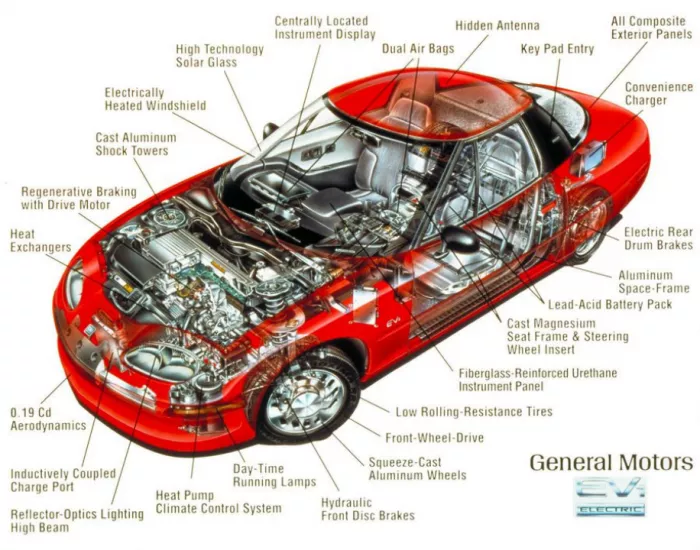
In a sense, the biggest impact of GM on Tesla is negative. When the automobile giants ended their electric vehicle projects one after another, they made it clear that it was not the right time for them to produce electric vehicles in the foreseeable future. At that time, the indifference of auto giants cast a dark shadow on the future of electric vehicles.
However, Tesla sees this as an opportunity. "We are often asked a question in the publicity, 'what is your greatest advantage against GM?'" tapunning's answer is, "automobile companies say that electric vehicles have no future. They are not interested in it. Unlike us fighting every day, they are not on this track at all, and clearly say that they will never participate in the race. We have several years to run all the way on this deserted track."
Tappenning is not wrong. Tesla has been running for ten years.
4 super Mary vs. iron man**
The tears you shed now may be the water that went into your brain in those years.
General Motors CEO Mary Barra believes that the contest with Tesla is a marathon rather than a sprint. She vowed to catch up with musk and eventually surpass him.
Mary said that GM will rely on price to win. In her opinion, Tesla cannot do this because the price of even the cheapest model 3 has increased from less than $40000 to $47000. "We don't necessarily only sell high-end products," Mary said. "We will bring electric cars that everyone can afford at a price of $30000."
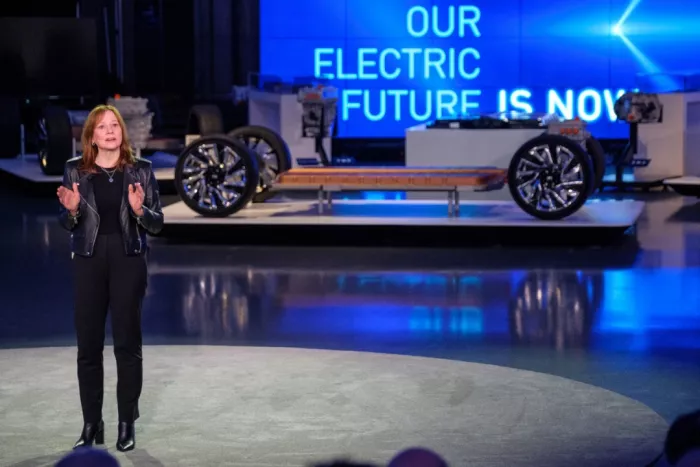
The strong woman's confidence also comes from GM's huge user base. Every year, more and more GM drivers are replacing their internal combustion engines with electric vehicles.
After the missed opportunity, GM is speeding up to catch up. In 2020, GM plans to invest $27billion in electric and automatic driving in the next five years, including the launch of 30 EVs worldwide. In 2022, GM even proposed a plan to electrify everything, including automobiles, ships and industrial machinery.
Getting up early in the morning and catching up late in the evening, General Motors has made great efforts and achieved certain success. But if they could travel back to the not distant past, I wonder if they would have made a different choice at that time.
Compared with the original no man's land, the current electric car track has been extremely crowded. Whether it is a traditional giant or a rising star, every enterprise holds a lot of money and comes aggressively. It happens to aim at Tesla.
Tesla will not stand still. According to Musk's plan, Tesla's sales volume will increase by 50% every year, and the total sales volume will reach 20million by 2030.
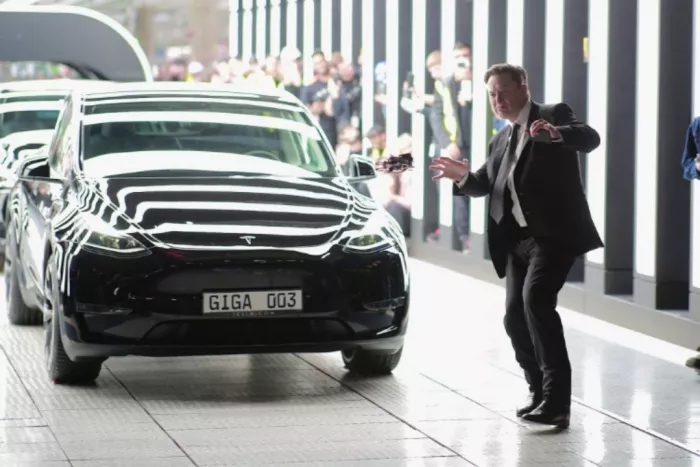
GM's "super Mary" has a long way to go. Of course, it has nothing to do with her. If you enjoy driving Tesla now, the long list to thank is the management team of General Motors in 2003.
After successfully forcing carb to repeal the electric law, Rick Wagoner, then chief executive of general motors, immediately stopped the production of electric vehicles. A few years later, he was ousted by the company due to poor performance.
Wagoner once admitted in an interview that the premature termination of EV1 was one of the worst decisions he had ever made, which made GM lose the opportunity to lead its rivals for 15 years. After leaving GM for many years, I joined a company that sold and maintained electric vehicle charging stations.
Eberhard left Tesla in 2009 due to differences in products, business philosophy and other aspects. His neighbor, engineer and racing enthusiast Ian Wright is also his friend and partner. "Eberhard founded Tesla with the original intention of manufacturing an electric car he wants to buy, and musk has a broader vision: he wants to become the next general motors company."
Thanks to GM, Musk's wish has been realized.